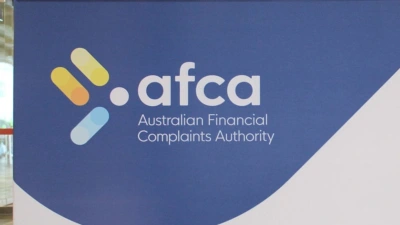Gearing: in or out?
The opportunity for clients to use a self-managed super fund (SMSF) and borrow for investment has received much media attention recently. While your clients can benefit by receiving income and capital gains at superannuation’s concessional rates, negative gearing with tax savings of just 15 per cent compared to marginal tax rates reduces the tax effectiveness of borrowing inside super. You should consider if certain gearing strategies may be more appropriate outside super.
A SMSF can borrow money under an instalment warrant arrangement. Using this strategy, a borrowing is used to purchase an asset (eg, shares or property) that is held on trust. The SMSF receives a beneficial interest and a right to acquire the legal ownership of the asset through the payment of instalments. There are various technical rules to ensure the arrangement complies with the law.
The benefits and considerations of an instalment warrant strategy are summarised in table 1.
Gearing outcomes
Where money is borrowed and invested into assets with the expectation to produce assessable income, a tax deduction can generally be claimed on the interest expense. Investments can be negatively, neutrally or positively geared as outlined in table 2.
Balancing the tax benefits
A key consideration for a gearing strategy is the ownership structure. That is, should the asset be held in the name of the client, partner, SMSF or other entity? When an investment is expected to be negatively geared, the entity with the higher tax rate receives a larger tax deduction. Similarly, when the investment is expected to be positively geared, the investment may be better off in entity with the lowest tax rate. Investments can change from negatively geared to positively geared over time (and vice versa). However, the expected gearing status of the investment must be balanced against the expected capital gains.
When the investment is eventually sold or redeemed, capital gains tax (CGT) may apply. Accordingly, super fund ownership becomes attractive as CGT is smaller on a lower tax rate. You should also consider that the CGT discount on assets held for over 12 months is only one third within super and one half if held personally. The case study below identifies the tax trade-offs you must consider when selecting the gearing structure.
Case study
Ricky purchased a commercial property in 2007 for $655,000, and it is now valued at approximately $750,000. There is a $500,000 loan attached to the property with a 7 per cent per annum interest rate. The lease payment received is $22,000 per annum (approximately $420 per week). The total tax deductible expenses on the property are $41,000 per annum. Therefore, the property has a net loss of $19,000 per annum ($41,000 less $22,000). Ricky’s marginal tax rate is 38.5 per cent.
Let’s compare the tax outcomes if the property was held inside super, as part of an instalment warrant arrangement and outside super in Ricky’s personal name. Table 3 compares the annual tax benefits of the net loss position on the property.
As the property is negatively geared, the additional tax benefit by holding the property outside super is $4,465 per annum ($7,315 less $2,850), which is a reasonably substantial annual saving. Next we compare the CGT outcomes, assuming the property is sold now (see table 4).
If the property is sold, the CGT is $9,500 in the accumulation phase of super, nil in the pension phase and $18,288 if held in Ricky’s own name. If Ricky could wait until a low income year, he can reduce his CGT payable. The inside super approach provides the better outcome to reduce CGT, particularly if the property can be held until the SMSF reaches pension phase.
Now we identify the structure providing the best overall tax benefits. Assuming the property was held for three years, the negatively geared tax benefit inside super is $8,550 (3 x $2,850) and if held outside super, the figure is $21,945 (3 x $7,315) — disregarding the time value of money. Table 5 compares the strategies once the negatively geared tax benefits and CGT is considered.
The overall tax benefit by holding the property outside super is higher than holding and selling property in the accumulation phase. Ricky achieves the best outcome by holding the property inside super and selling the property in the pension phase. The results depend greatly on the assumptions chosen. You need to ensure you do the sums, use appropriate estimates and identify the best gearing structure for your client.
Summary
Despite the widespread attraction of gearing within a SMSF, borrowing to invest outside super can also provide tax benefits if negatively geared. Furthermore, the legislation to satisfy the instalment warrant borrowing rules is reasonably complex and the ATO may apply penalties for non-compliance. You should also consider the tax and legal costs to establish the necessary structures if using the super option. The success of a gearing strategy depends on your client earning a sufficient after-tax capital gain to offset any after-tax investment income losses.
Mark Gleeson is technical services manager for advice and distribution at OnePath.
Recommended for you
ASIC’s court case with Interprac is causing advisers to explore the possibility of self-licensing, according to My Dealer Services, as they observe the reputational damage it can bring to a practice.
AZ NGA has entered a strategic partnership with a Sydney advice firm with $600 million in assets under advice to support its succession plans and future growth.
With complaints on the rise and an expanded jurisdiction, the Australian Financial Complaints Authority is on the hunt for four C-suite roles, three of which are newly-created positions.
Ahead of the 1 January 2026 education deadline for advisers, ASIC has issued its ‘final warning’ to the industry, reporting that more than 2,300 relevant providers could be on their way out.










